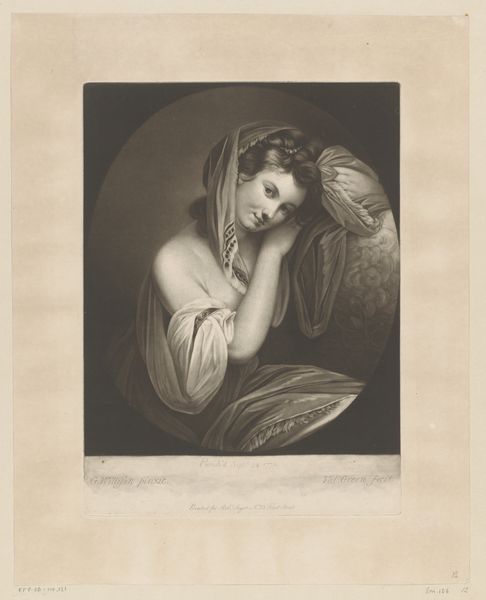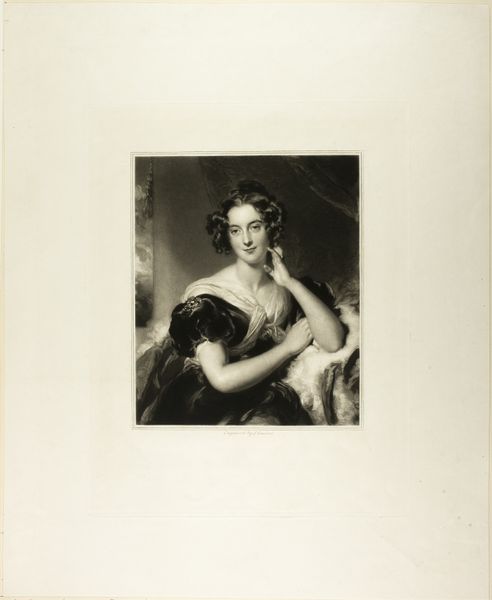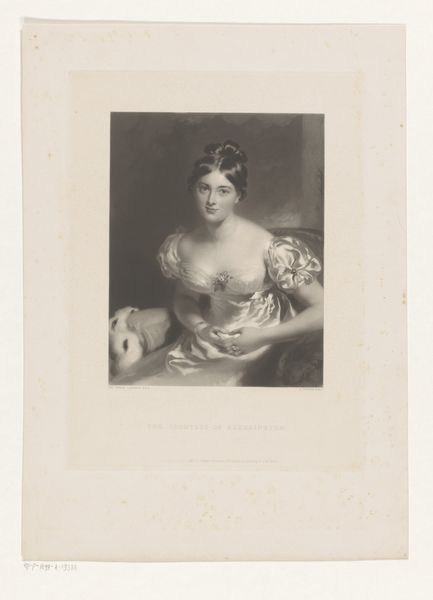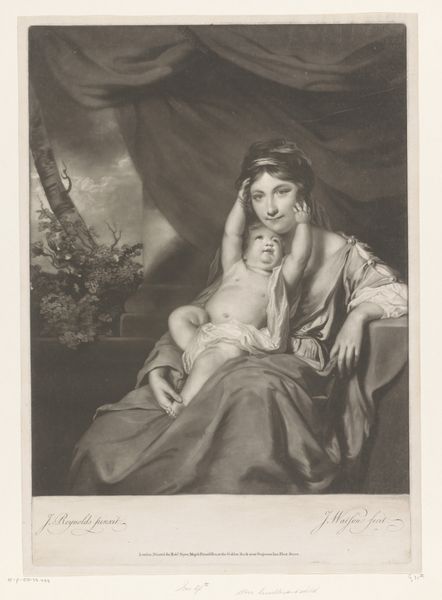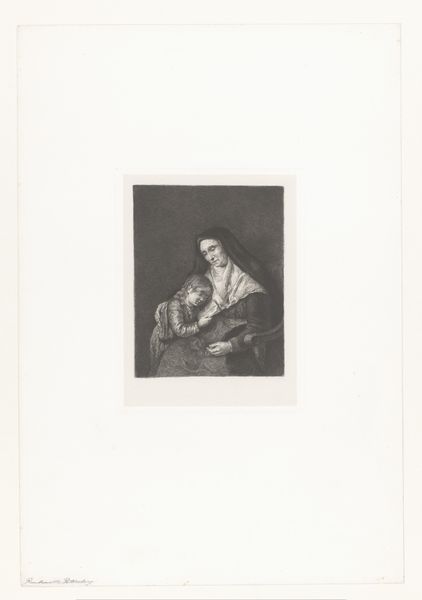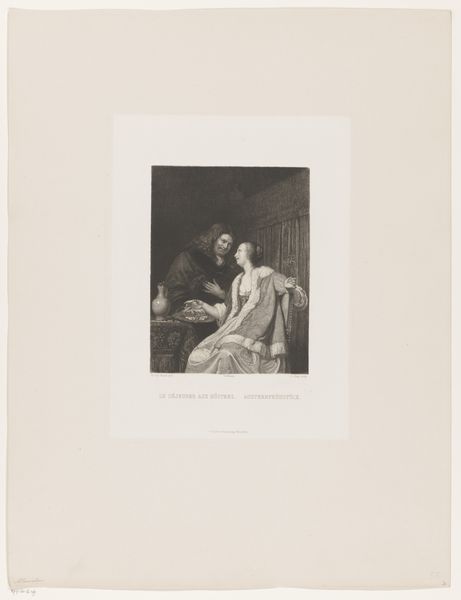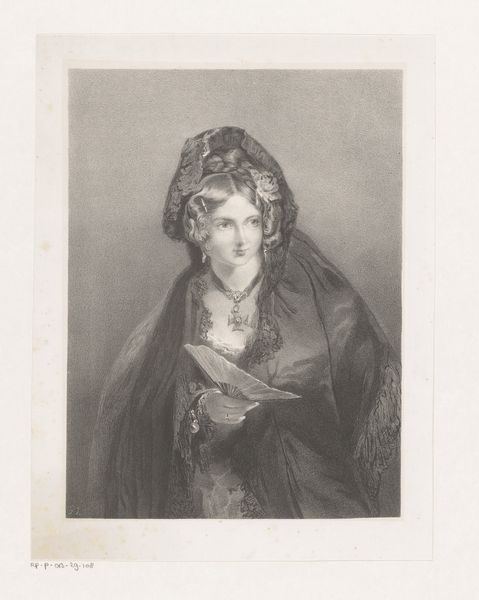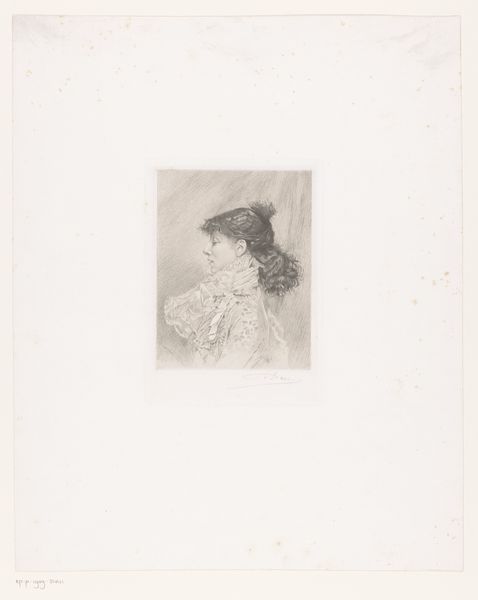
painting, watercolor
#
portrait
#
painting
#
watercolor
#
romanticism
#
watercolour illustration
#
academic-art
#
watercolor
Dimensions: height 504 mm, width 352 mm
Copyright: Rijks Museum: Open Domain
Editor: Here we have Charles Turner’s watercolor portrait of Emily St. Clare, likely painted between 1810 and 1815. I'm immediately struck by how delicate it is, especially the way she's holding what appears to be a miniature portrait pendant. It gives off such an intimate feeling. What's your interpretation of this piece? Curator: This portrait encapsulates a very specific ideal of feminine beauty popular during the Romantic era. But beyond individual beauty, portraiture during this period became intertwined with social status and even political messaging. Think about the role of the Royal Academy, for instance, in promoting certain artistic styles and, indirectly, reinforcing the power structures of British society. Editor: So, it wasn't just about capturing a likeness? Curator: Exactly. Consider the setting: dark and rather undefined, which focuses the gaze entirely on Emily. This serves not just aesthetic but also a social purpose. In the late 18th and early 19th centuries, the rising middle class used portraiture to assert their place in society. What statements might Emily's dress, adornments and thoughtful pose, communicate? Editor: The pearl necklace, the fur-trimmed coat… She seems to be deliberately displaying wealth and refinement, but in a way that is subtle and emphasizes sensibility. I guess these paintings aren't simply documents, but carefully constructed images, aren't they? Curator: Precisely. And watercolour, whilst being seen as an acceptable, less "serious" medium than oils for women artists, became a commercially savvy sector for printmaking firms, allowing greater dispersal of portraiture amongst a growing consumer culture. How are portrait miniatures shaping up within this cultural framework? Editor: It's fascinating how something that seems so personal can actually be so deeply connected to broader social and political currents! Curator: Indeed. Understanding that interplay makes viewing these works much more enriching. I'm grateful for you making me reconsider it again from the vantage point of portraiture's wider dispersal, as it were!
Comments
No comments
Be the first to comment and join the conversation on the ultimate creative platform.
